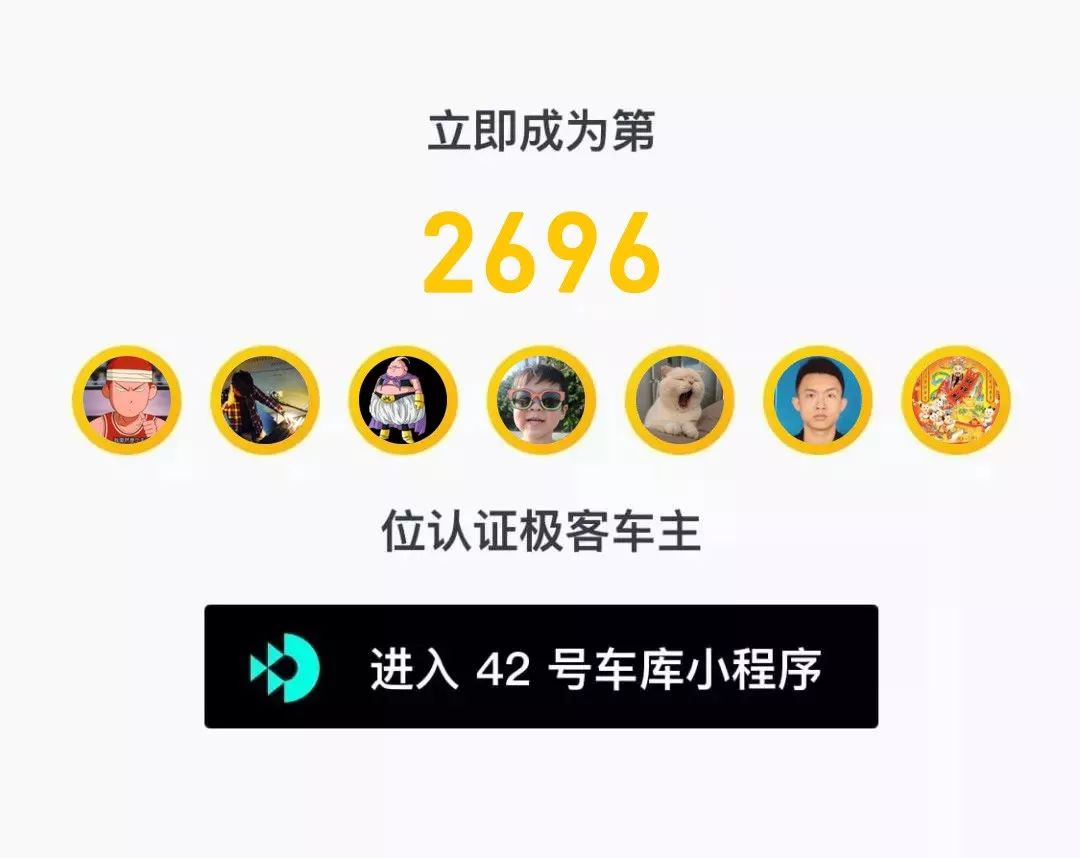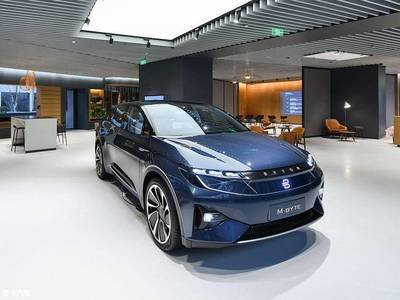Among all the new forces in the automotive industry, Byton has undoubtedly experienced the most setbacks, with financing difficulties and delayed product deliveries, which once made people feel that Byton was on the brink of collapse. However, at this time, Byton released its first engineering prototype and plans to start mass production in mid-2020. Can Byton rebound from the bottom and keep up with the market?
As of the end of November 2019, the coldness of the auto market has made many automotive companies feel much colder than the winter weather. From January to October, the total sales of domestic passenger cars decreased by 8.3% year-on-year, while the expected new energy passenger cars decreased by 46% in sales in October, selling only 63,000 units.
It was expected that 2019 would be a big year for delivery of new automotive forces, but as of the end of November 2019, only more than ten of them have achieved delivery. Among them, NIO, WM Motor, and XPeng, as representatives of new automotive forces, account for more than 90% of the delivery volume. Byton, Ideal, and Aiways are still striving to achieve mass production and delivery as soon as possible.
Byton may be said to have experienced the most twists and turns among all the new automotive companies. They have almost experienced all the pitfalls of entrepreneurship. External doubts such as PPT car manufacturing, financing difficulties, CEO departure, and relationship with investors sometimes make people feel that Byton is basically sentenced to “death penalty”.
Byton, which has almost been forgotten by people, returned to the battlefield with the M-Byte with a giant 1.25-metre screen. Although Byton is indeed a bit slow among the new automotive forces, sometimes “walking slowly is also for walking faster in the future”.
A turning point for Byton is its interim victory. On November 6, 2019, at the Byton factory in the Qixia District of Nanjing, they unveiled a vehicle product that is the most controversial among all the new automotive forces to date-the Byton M-Byte. This is the first time that Byton has released a mass-produced version of the M-Byte product in China.
Byton CEO Daniel Kirchert said that the M-Byte is not only a pure electric vehicle, but also an intelligent and interactive device and a mobile living room. This release means that Byton officially began to launch an attack on the Chinese electric vehicle market.
If it were not for Byton’s recent intense voice, I almost forgot that there was a Byton in the new automotive industry. Moreover, from the brand’s first release in Shanghai in 2017 to the sudden departure of the CEO, for a long time, I personally did not have high hopes for Byton. After all, even companies as strong as NIO and WM Motor are still deeply mired in mud. However, After experiencing a series of changes, Byton seems to have stabilized, as reflected in three aspects.Firstly, let’s talk about the financing situation. In May 2019, Byton initiated its Series C financing round, which included investors such as FAW Group, industrial investment funds under the Jiangsu Provincial and Nanjing Municipal Governments. In late October, Byton announced that the financing round had successfully raised $500 million, which was crucial to Byton’s survival.
According to Byton’s public statements, it has completed four financing rounds totalling RMB 8.5 billion. Although this amount pales in comparison to the over RMB 10 billion financing rounds achieved by NIO, XPeng and WM Motor, the funds have given Byton breathing room to execute its clear plan: achieving mass production and delivery in June 2020, breaking even in 2021, and achieving overall profitability in 2022.
Secondly, the launch of its Nanjing factory is a critical part of Byton’s strategy. Although building its own factory is costly, having control over the entire value chain, from R&D to supply chain and production, is vital for newcomers in the automotive industry. The factory has already started trial production and will begin mass production at the end of next year. The factory will have an initial production capacity of 150,000 units per year, a significant milestone for Byton’s development.
Lastly, let’s talk about the product. Even now, the concept version of Byton’s M-Byte remains unforgettable due to its over 1 meter long screen. On November 6th, Byton launched its first mass-produced model, the M-Byte, which retained over 90% of the design elements from the concept version. Most importantly, the 48-inch oversized screen that everyone was anticipating was also retained. After seeing the M-Byte, a friend of mine born in 1995 was convinced to buy it.
Byton’s approach may be considered a daring move, but it might be the decisive weapon for its comeback. We all know that financing and factory ownership are ultimately aimed at creating quality products that meet consumer needs. Byton’s focus is on the “fourth space” concept, targeting the large luxury SUV market, especially for young people born in the 1990s, where the M-Byte’s 1.25-meter-long screen serves as the centerpiece of intelligent interaction. The screen is split into three parts, with driving data displayed on the left, and navigation and other services on the middle and right, allowing drivers to focus on the vehicle’s data changes in real-time.Based on the research on changes in driver’s field of view, Byton M-Byte has optimized the user interface design as a whole, presenting various information quickly and clearly with simple colors and structure.
The in-car ecosystem, formed by the APPs such as Baidu voice and navigation, Ximalaya, Meituan-Dianping, Maoyan Cinema, QQ Music, and iQIYI, as well as the five interactive ways including touch, voice, facial recognition, gesture control, and entity buttons, form a comprehensive interactive experience.
Byton’s product strategy is clear, focusing on the luxury SUV market. In the Chinese luxury car market, the sales volume is about 3-4 million, and it is still growing. Byton is targeting the incremental market.
On the other hand, WM Motor insists on seeking sales growth through cost-effectiveness. However, if it wants to break through to the high-end market in the future, it may need several product iterations to gradually change consumers’ brand perception. XPeng Motors wants to both pursue sales through low-end products and cultivate a sense of luxury brand, which is inherently contradictory.
According to the “China Luxury Car Market White Paper” by iResearch, the demands of the new generation of luxury car consumers are mainly focused on “luxury” and “core technology”. Luxury is reflected in the design and craftsmanship of the car, and technology is reflected in intelligence and connectivity. Byton has achieved these two points.
By the end of 2019, Byton had officially launched a mass-produced model, completed its Series C financing, and began mass production. Overall, Byton had achieved a stage victory.
In addition to the product itself, Byton has established a first-class sales network. According to public information, Byton has signed cooperation agreements with dealer groups from 14 countries in overseas sales channels. This allows Byton to receive orders from the European and American markets and establish a complete dealer system.
Even if the domestic competition is fierce, Byton can alleviate sales pressure by fulfilling a portion of international orders. Of the current 50,000 global reservations for the M-Byte, half are from China and half are from Europe and the United States. There are 10,000 no-deposit reservation holders in the United States alone. The most important thing is that the system established with European and American dealerships helps to improve international capital’s attitude towards this new car manufacturer and enables Byton to attract international capital.
In the field of charging services, Byton has cooperated with State Grid, TELD, Star Charge, Anyue, and YunFast for charging operators and has recently become the first strategic partner of Beijing Lianxing.
In terms of financial and insurance services, Byton cooperates with Bank of China, Ping An Bank, Ping An Property & Casualty, and China Pacific Insurance to provide users with one-stop intelligent butler services.Until now, Byton has achieved phased results in vehicle manufacturing, supply chains, sales, and after-sales, and each part has achieved the expected effect. This is why there has been a lot of market noise around Byton after it has been quiet for a long time, and why Dr. Carsten Breitfeld always looks confident and determined – this confidence comes from concrete results.
However, although Byton has returned to the right track, it still faces many problems in the future, the most core issue is still the fund. Making cars cannot be separated from money. It is known that Byton’s C-round financing has not yet been fully received, and Byton has already postponed the delivery time. How to ensure smooth production in 2020 without the funds arriving?
When will the D round of financing arrive? According to the plan, the C round of financing can only support the mass production stage. What should be done afterward? Judging from the current sales situation of electric vehicles, Byton cannot guarantee how many sales it will really get after going on sale. In today’s increasingly cautious capital situation, it is not easy for Byton to raise large amounts of funds, and Byton’s own financing ability in the new auto industry is not strong. Although Byton has communicated with Middle Eastern capital many times, there has been no actual funds received, so the sword hangs over Byton’s head forever.
The problem of production qualification acquisition. Byton acquired FAW Huali’s qualification, but the dramatic part is that it has not been completely successful. Byton acquired FAW Huali for one yuan, but it also includes more than 800 million yuan of debt. To put it plainly, Byton did not pay the money, so Huali did not give you a production qualification. Paying first and then delivering is the rule. And the C round of funds has not been fully received, which is probably because they do not have the money. The qualification issue needs to be solved. Otherwise, no matter how good the product is, it’s useless. But I think this is just a matter of time.
Competing positively with new car makers, traditional joint venture brands, and Tesla. Although the auto market was still cold in 2019, the strategic layout of automakers for electrification was in full swing. Regardless of German, American, Korean, or Japanese brands, the importance of electrification to traditional enterprises was beyond our imagination. Volkswagen replaced the new brand and released the ID. series products, Tesla’s domestic production, and Chinese automakers are also expected to deliver concentratedly in 2020, which all put pressure on Byton.
Byton has now achieved good results in production, sales, channels, and after-sales, but these still need to be deepened and strengthened in the future. Although the luxury car market is an incremental market, how to do good user operations will also be a key point for Byton in the future. Doing good user operations, establishing an awareness of the Byton brand, although 90s are relatively easy to accept new things, they are also the most picky generation. One of their labels is “personalization”. It is essential to establish resonance with 90s users from product to brand.
Summary:Although BYTON has gone through a bumpy road, luckily, it has been steadfastly advancing step by step. It mainly focuses on the luxury SUV market and establishes its foothold in China while facing the whole world. This will be the best start for BYTON. At this stage, BYTON has completed several important tasks. However, the future competition will only become more cruel. After shuffling, there should be no new brands in the Chinese new energy electric vehicle market, and in future competitions, there will only be life and death. I wonder if BYTON is ready for it.




This article is a translation by ChatGPT of a Chinese report from 42HOW. If you have any questions about it, please email bd@42how.com.
